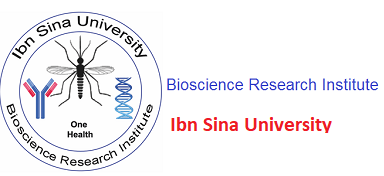Association of IL-10 (-1082 G/A) and IFNγ (+874 T/A) SNPs and Cytokines Expression with the development of Complicated Schistosomiasis in Sudanese Patients
Introduction: Most infected individuals living in schistosomiasis endemic areas do not suffer severe liver damage, but a minority develop hepatosplenic morbidity and esophageal varices Analysis of the immune response of chronic schistosomiasis patients may allow identification of the host immune factors associated with the development of complicated Schistosomiasis.
Objective: The objectives of this study were:
-To determine the association of genetic polymorphism of IFN-γ (+874T/A) and IL10( -1082) with complicated schistosomiasis .
-To determine the association of the cytokine profiles with complicated schistosomiasis .
Materials and methods:.A cross section study was conducted. Fifty confirmed schsistosmiasia patients with hepatosplenic and vacices complications, 15 healthy endemic controls and 10 healthy nonendemic controls were consented and enrolled. The genetic diversity of IFNg and IL10 cytokine genes sequences were determined by allele specific PCR amplification.Functional cytokine profilesTh-1 (IFN- and TNF-α), Th-2 (IL-10), and inflammatory cytokines ( IL-6, IL-8 and IL-15) were measured in patients and controls following stimulation of whole blood samples collected from the patients compared with the controls, using ELISA. The antibody profile of IgG antibodiesand IgG subclasses were measured in the serum of patients and control against purified Schistosoma word and egg antigens. .
Results:No Significant association between IFN-γ (+874T/A) SNP or ( IL10-1082) SNP and the development of complicated Schistosomiasis were detected (p≥,05) .The concentration of TH1 inflammatory cytokine ( TNF-α) and the inflammatory cytokine (IL-15) were significantly less produced by stimulated whole blood samples from patients, compared with the endemic controls and non endemic controls. In contrast, TH2 cytokines ( IL-10) and the inflammatory cytokine (IL-6) were significantly produced by schistosomiasis patients compared with the non endemic controls.. A significantly high IgG response to SEA was measurable in endemic control.
Conclusion: IFN γ (+874T/A) or ( IL10-1082) alleles were not associated with the development of complicated Schistosomiasis. Complicated schistosomiasis patients unexpectedly produced low TH1/TH2 cytokine response, with increased inflammatory response and elevated IgG response to SEA
Molecular Characterization and mapping of Biomphalaria snails from Schistosma endemic area in Sudan
Back ground: Schistosomiasis is a serious health problem of public worldwide. It is anglected diseases of poerty. Schsistoamiasis is endemic in 78 countries and its prevalence is associated with the existence of the intermediate host the snails.
This study aimed to characterize biomphalaria species the intermediate host of schistosoma mansoni using molecular methods. It also aimed to determine the phylogenetic of biomphalaria snails in schistoma endemic reas in Sudan.
Materilas and methods: Biomphalaria snails (n=3316) were collected during dry and early wet season February- April 2014 and July August at the beginning of the rain fall. The snails were identified using morphological routine methods and molecular methods. The DNA was ectracted from the sails using Gundidne hydrochloride method. The rRNA-ITS RFLP profiles was determined PCR amplification followed by RFLP with Dde1 enzyme. Phylogenetic analysi was done using PAUP software
Results: Natural specimens of Biomphalaria snails were found in 54 out of 76 sites in 5 habitat, The distribution of the collected samples was from Gezira 1355 (40.8%) Khartoum, 1100 (33.2%), Kasalla, 453(13.7%), White Nile, 215 (6.5) and from Gadarif state193 (5.8%). Forty three Biomphalaria (1.3% of all snails) were infected with schistosoma mansoni human cercarea and 53 (1.6%) snails were infected with non-human cercarea. The intermediate hosts of S. mansoni in Sudan, B. pfeifferi, B. sudanica, and B. alexandrina, were identified by restriction fragment length polymorphism (RFLP) analysis of the internal transcribed spacer region of the rRNA gene. PCR amplification of the Biomphalaria ITS region with the primers ITS 1 and ITS 2 resulted in a product of approximately 1.2 kbp for all of the species. Using Dde1enzyme Biomphalaria pfeifferi is characterized by the presence of three fragments of approximately, 530, 420, 250 bp .in different state of the Sudan. B. sudanica and B. alexandrian which found in the White Nile state in the White Nile river associated with the aquatic plants, characterize by the presents of two fragments of approximately 700 and 500 bp for B. sudanica and 450 and 220 bp were characterized B. alexandrina snails, respectively. The RFLP profiles obtained using Dde1 enzyme are highly distinctive and exhibit low levels of intra specific polymorphism even between Biomphalaria pfeifferi specimens collected from diverse regions of the Sudan.
Discussion and conclusions: The PCR/RFLP method accurately identified the three Biomphalaria spp. in different endemic states in the Sudan. B. pfeifferi more devastating species in the Sudan was found in Khartoum, Gazeira, kasalla, Gadarif and also in White Nile state, B. sudanica and B. alexandarina (Nilotic group) were found in the White Nile.

